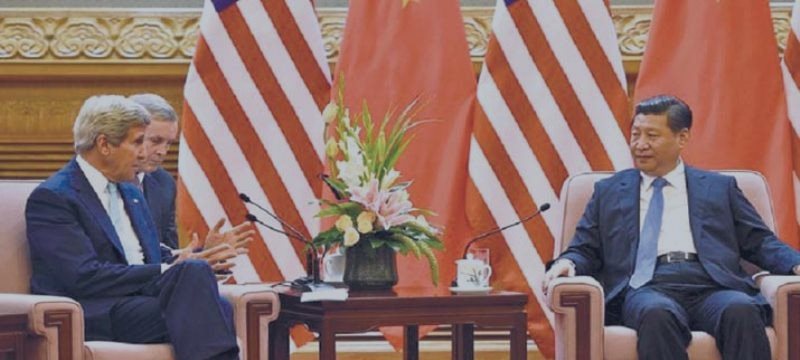Constructive strategies to Asia-Pacific.
The U.S. needs a strategy to constructive ties toward an open order and based on rules that will help the development for prosperity and cooperation in Asia. That is definitely not desired withdrawal or aggressive U.S. Temperance. For a balanced strategy that enables analysts, Olin Wethington and Robert Manning in conclusion in a report for the Atlantic Council.
In a report entitled "Shaping the future of the Asia-Pacific region; with the strengthening of the institutional Architecture for Open Economic Order and according to the rules, "both analysts posited that a detailed analysis of the dynamics of who was on the rise in the region, the logic of the economic architecture to support inclusive and based on rules, and a thorough description of the steps necessary to achieve the desired results.
The following key points from the report the two analysts.
The dynamism of regional economies, and the more the need for China to rethink its strategy of attachment. Asia in the global economy including the second and third largest (China and Japan), and the countries of the ASEAN economies, which will move the global growth in the future. China, in particular, have experience of astronomy – now, its economy more or less 50 times bigger than his condition in 1980. A new initiative led by China as "One Belt, One Road" and AIIB, along with the security policies that are more aggressive, have seized the attention of global policy makers.
The U.S. has the capacity to maintain its leadership in the Asia-Pacific region, but need to focus to the development of the coalition. The U.S. maintains a series of national power summarily to provide global effects that have no equal. Economic greatness, dominance of technology-driven entrepreneurship and innovation, an interesting social and political culture, and a combined military force to form the totality of U.S. power. These assets must be balanced with the types of skills and prowess that coalition partners facilitate the hand in order to achieve a positive regional targets.
Architecture-driven monetary Bretton Woods Institutions the U.S. leader, got pressure and need adjustment. Global monetary institutions and the structure of U.S. adults no longer reflects the reality of modern economics, and should be adjusted, and for certain stages, accommodate and incorporate new institutions into the global architecture. For starters, the U.S. should run the IMF quota reform. The failure of the U.S. to do it becomes a source of continuous disappointments for emerging economies (countries of the new economy to rise) and it should be their processes for validating the formation of economic structures replacement. Moreover, the us should be prepared incorporating the Renminbi (Chinese yuan) into the SDR basket currencies (international reserve assets) of the IMF if it meets the standards of the free floating of the IMF.
Demand for construction and infrastructure is very high, but the competition is getting tougher in this sector. The need for funding the infrastructure development in the Asia-Pacific region. The ADB estimates the demand for regional infrasturktur from 2012-2020 financial now exceeds the ability of the roughly $ 8 trillion, the far greater than the that can disediakanoleh a donor agencies. AIIB appears, which is part of the tebesarnya to help cover this deficit with the Fund, and the existing institutions should be prepared to partner with AIIB while also securing the existing standards and maintaining best practices. The U.S. must strengthen the institutions which he ruled in the Asia-Pacific region as part of a broader development strategy for the Asia-Pacific region who sustain private sector investment in a partnership with the newly formed initiatives.
Trade remains a critical sector for attachment to the economy, and the U.S. must initiate the trade agenda courageous to maintain leadership in the setting of economic regulation in the field. It's not for the US national interests, and could help facilitate regional prosperity. The growth of global trade became one of the most prominent facet of the economic system of the new "global". Include trade promotion Authority (TPA) is definitely a positive step, but the U.S. must still prioritize the Trans-Pacific Partnership (TPP) to secure an open trading system and on the basis of regulations in Asia-Pacific region. The US must also be ready to develop an agreement outside of the 12 countries, and the most necessary in this expansion is openness including against China. The U.S. also must be prepared to make it a bilateral investment agreement including with China, said the two analysts it. https://www.mql5.com/en/signals/111434



